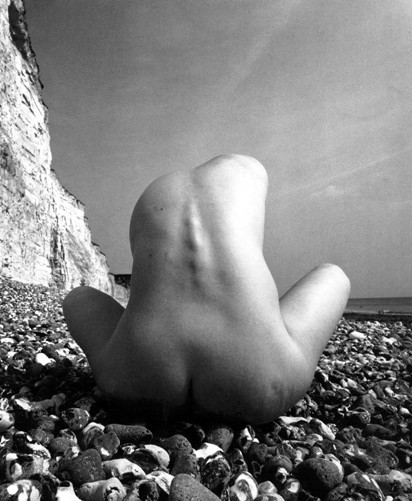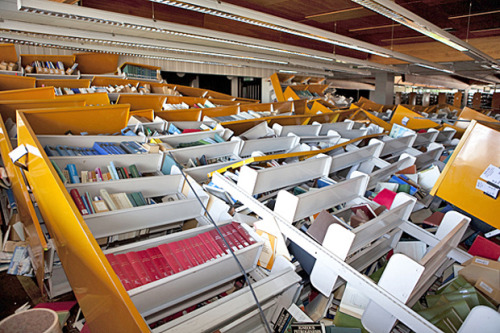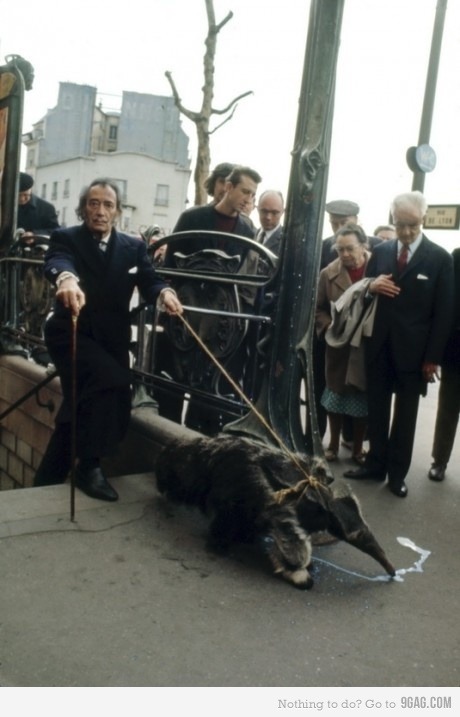THEORY, CRITICISM, OR AESTHETICS?
Having not been near Proximity Magazine in a while, I was delighted to stumble across this article by Alex Robbins, In Defense of the Philosophy of Art. I have reproduced the article below, with my own annotations and links in grey.
There is a saying, attributed to the painter Barnett Newman, that “aesthetics is for art what ornithology is for the birds.” This quip sums up the divide between those who make art and those who think about art. Neither birds nor artists need their academic counterparts to do what they do. But the analogy falls apart quickly when you consider that birds are able to live quite peacefully in a world with the ornithologists who study them, while some artists (like Barnett Newman) have a rather antagonistic position towards aestheticians. What helped create this divide and what keeps these parties separate?
Birds might actually benefit from a study in ornithology.
General confusion over the terms used in discussions like this is one factor. Terms such as “art theory,” “the philosophy of art,” and “aesthetics” all get used somewhat haphazardly and seemingly interchangeably. In a good deal of arts writing they are almost indistinguishable, but to clarify our current discussion I will suggest some practical differences.
Art theory is connected to art criticism. Texts in art theory propose proper ways to execute and explicate works of art. Art theory is generally prescriptive, such as Clement Greenberg’s theory of painting, which prescribes a theoretical framework an artist should deploy even before approaching a canvas. The philosophy of art, on the other hand, is expressly non-prescriptive. Its practitioners aim at a more descriptive position towards art. Philosophers of art use art as examples in philosophic arguments, as when the philosopher Arthur Danto used Warhol’s Brillo Boxes as an example to further his arguments in analytic philosophy. Philosophy of art can broadly engage with issues of language, knowledge, ethics, and many other topics. The third term, “aesthetics,” is a sub-set of the philosophy of art that concerns itself with questions of beauty.
This limited view of aesthetics is clearly not what people think of when they consider aesthetics. Instead theory, philosophy, and aesthetics all get blurred together. This is understandable, however, as prominent theorists often cite philosophers for their own work. During the 1980′s the critical writing in the journal October drew heavily from Deleuze, Foucault, and Derrida, dragging that generation of French philosophy into art criticism – but you would be hard pressed to find Foucault describing himself as an art critic. Or take any syllabus from an MFA seminar in theory and you will likely see texts from prominent philosophers like Kant and Hegel alongside articles from Artforum. Philosophy gets lumped in with everything else. When artists react to or reject theory, philosophy becomes the baby in that bath water.
I recently spoke with Lane Relyea, art critic and professor at the MFA program at Northwestern University, about the conflict between theory and practice for art students. “The MFA curriculum is split between group crits [critiques] and individual studio work,” said Relyea in a phone interview. The crits are defined “by public position-taking, where artists stand with their backs to their works and mount an argument.” Whereas “in the studio, students turn from the group and face their work.” These ways of working define the poles of art production for many artists. As the MFA becomes an increasingly prominent part of an artist’s career, this split between public theorizing and private production becomes an ever more important part of the art-making process. It has established a de facto dialectic between talking and making, and certain artists who want to be reactionary find themselves reacting to this very order. The reaction is against the necessity of talking theory, and because philosophy gets combined with theory it gets dismissed.
This would perhaps be a much more tragic article if philosophy of art sought in vain for the approval or even the attention of working artists. But the truth of the matter is that those working in the philosophy of art don’t need artists to notice them. Instead the philosophy of art is primarily written for an audience of philosophers. “Philosophy is retrospectively valuable,” said Gary Iseminger, professor emeritus from Carleton College and former President of the American Society for Aesthetics. “The philosophy of art happens after the fact, after the art is made. I think of philosophy as coming along for the ride,” said Iseminger in a recent phone interview. Unlike criticism, philosophy of art avoids imposing views on artists. Instead many philosophers approach art as a “strategic way to get to philosophic issues. Art can be used as test examples to make general claims in philosophy.” These generally fall into claims about metaphysics, epistemology, and ethics. An example of a recurrent question in the philosophy of art is, “does one get knowledge from works of art, and if so, what kind of knowledge?” Such a question would of course have bearing on general theories of knowledge. But this strategy of using art to approach philosophy hasn’t always been accepted in academia.
Iseminger, who began his teaching in the early 60′s, recalled that when he started his career in philosophy, “in America and the UK, aesthetics and the philosophy of art was an abandoned field. There was a tendency for philosophers to worship and discuss only science. Other topics weren’t worthy of rational investigation, but this has changed since the 60′s.” In the current US and UK scene, philosophers have taken a serious interest in the arts. The philosophy of art has carved out a small but definite niche for itself in the world of academic philosophy. There is a consistent number of journals dedicated to the philosophy of art, most prominently is the Journal of Aesthetics and Art Criticism published out of Temple University (also of note are the British Journal of Aesthetics out of Oxford and Journal of Aesthetic Education from the University of Illinois press). Groups like the ASA (American Society for Aesthetics) have had steadily growing memberships (their website is http://www.aesthetics-online.org/ and has a comprehensive list of journals from the US and Europe). Topics in aesthetics come up at national conferences. But it is important to stress that the philosophy of art is still a small sub-set of the philosophy profession, perhaps smaller than most artists realize. Philosophers of art write for a small audience of philosophers of art. Their work isn’t necessarily read by philosophers generally and, as I’ve argued, not by artists generally either.
Imagine if a current artist with a bias against theory were able to get beyond that barrier and seek out works in the philosophy of art. Would there be value in it for that artist? Would it be helpful to him or her as an artist? It would certainly be a hard sell. While philosophers of art generally discuss specific works of art, these works are generally old and outside of contemporary circles. It’s unlikely to see philosophers discussing a recent show in Chelsea or what went down at the last Documenta. Rachel Zuckert, a professor of philosophy at Northwestern University and whose own writing deals with the philosophy of art and beauty, pointed out that “the works of art discussed move along with influential essays.” In other words, since Danto talked about the Brillo Boxes, many after him end up also talking about the same Brillo Boxes. Or for example in the German tradition, “Greek sculpture is the absolutely formative, central art form that is considered by philosophers – especially Laocoon, which becomes an ever-recurring reference point,” wrote Zuckert in an e-mail. For philosophers, “there is a pressure for canonical and old things. You need works that your audience knows, and you choose them for rhetorical reasons.” So the imaginary artist who picks up a recent journal in the philosophy of art may be surprised to find all the artistic references are nearly a century old.
So while art makers and philosophers of art seem to share similar interests and perhaps even similar goals, the two worlds are deeply segregated. For the artist, philosophy of art gets bundled up with the often disliked “theory.” Examples used by philosophers are old, from the 1960′s at best, and the writing is often dry and confined to academic journals. Plus it’s hard to figure out how it will help working artists make art.
From the philosophers’ vantage, their goals have nothing to do with influencing artists. They examine art after it’s made to create distinctly philosophic arguments. It can be argued that the philosophy of art is helped by being distant from trends in the art world and fads in the market. Philosophers talk about art pieces that have stood the test of time and have a perspective that is perhaps sobering and provides an advantage for making rational claims about the nature of art, knowledge, morality.
And so the two camps have existed at arms’ length. But this needn’t be the case. It’s not hard to think of different interactions between artists and philosophers. Philosophy needn’t always be 50 years behind, and artists needn’t steer clear. If there is any antagonism between the two, it comes from the misguided perception of the scope of theory. Many philosophers of art refrain from writing about contemporary art, but are themselves deeply interested and invested in the current art world. Perhaps if greater numbers of artists did show an interest in philosophy, philosophers would begin writing about more diverse works, with all this spurring new conversations and considerations. While artist may not gain a new theoretical framework for their studio, they may find philosophy’s approaches to art refreshing. It may open up new ways of thinking without the imperative of accepting a particular theory.
On second look, it would appear that birds might actually benefit from a study in ornithology. Philosophers and artists are really the same species. They work in a world of ideas and objects. They hide in their studios or libraries and emerge with bits of writing and performance (the artist’s statement or the presented lecture). While they may still speak to different audiences, perhaps an open engagement, or collaboration with these thinkers could benefit us all. It may not necessarily create better art or stronger philosophy, but it may, modestly, open doors to the new and unexpected.
by Alex Robbins
illustration by Mirko Cresta





















































